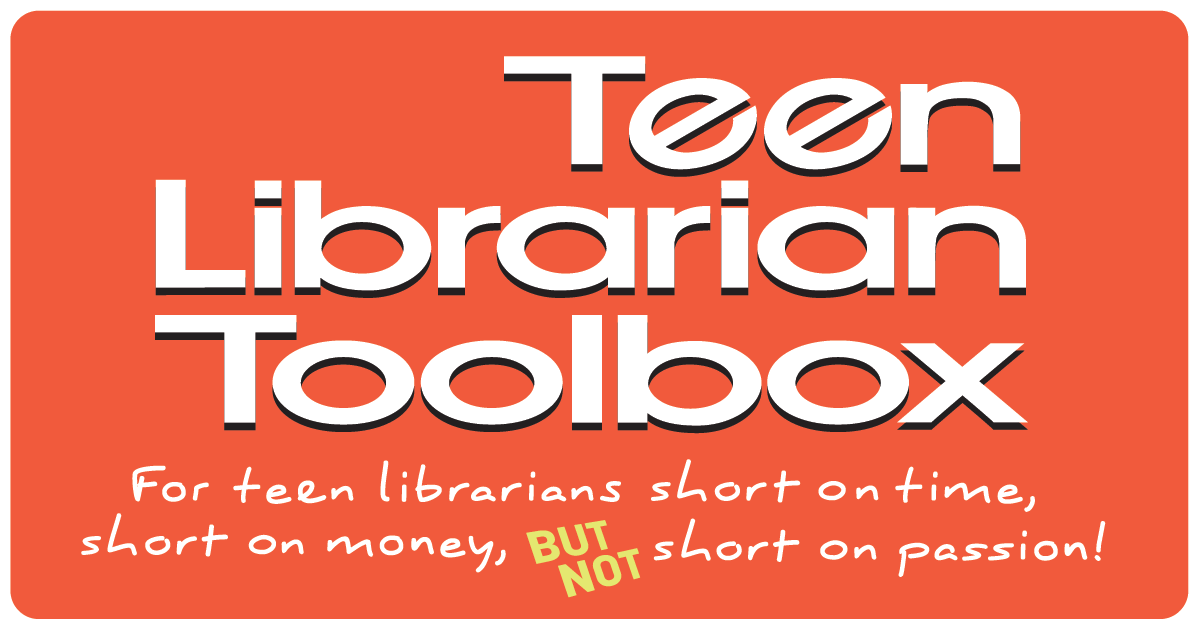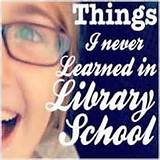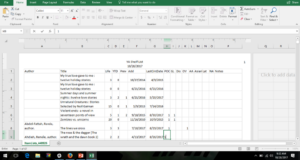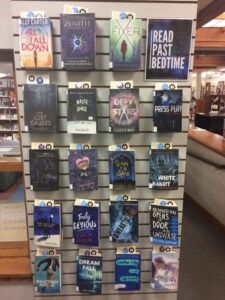Beyond the Collection Diversity Audit: Inclusion is More Than a Book, Why we should be auditing all of our library services for inclusion and best practices
When I first began doing collection diversity audits, I had no idea that was what they were called. It was actually SLJ editor Kathy Ishizuka who gave me a name for what I was doing. I had Tweeted out pictures of me trying to figure out how inclusive my collection was and she said, “Oh, you’re doing a diversity audit”. And I thought, “Yes! That’s what I’m doing.” Doing diversity audits has radically changed how I approach and think about library services.
Since doing that first collection diversity a few audit years ago, I have changed my approach in the ways that I do a lot of things, keeping an eye always towards analyzing myself for inclusive practices and challenging myself to step out of my personal default, which is a white cisgender Christian perspective. Although I strongly advocate that everyone who buys books in a library do at a bare minimum a book order audit, I no longer do just a collection diversity audit and I challenge us all to think more inclusively about how we approach all of our patron services in the library. We need to be looking at every service, program and offering to make sure that it helps us build inclusive libraries.
ADVERTISEMENT
ADVERTISEMENT
1. Storytimes
I have not done storytimes for a really long time. As a teen librarian, it just isn’t something I’m actively engaged in. If I did do storytimes, however, I would keep an ongoing audit of the books that I use in storytime to make sure that I was practicing diverse and inclusive storytimes. And if I oversaw a department of staff that did storytimes, I would require them to do so and would build that criteria into part of their yearly evaluations. Not to be punitive, but because I believe it is important for children to see a more realistic representation of the world that they live in and we owe it to our public to be as deliberate as possible in making sure that we are doing everything we can to serve them well and with intentionality.
It would take a little bit of additional time, but storytime presenters could use a spreadsheet or set up a Google Form, which then compiles the data into a spreadsheet, to keep a running list of their storytime books and do a bit of data analysis to ensure that we are not skewing to heavily to the white default in our storytime offerings.
2. Displays
Although I am not currently in charge of doing any displays, at my last position I spent a lot of time analyzing and rewriting guidelines for how we approached displays. I wrote a policy which explicitly stated that each and every display that we presented to the public must be diverse and inclusive and put into practice measures that would help us ensure that they were. A simple display notebook was put together and we took a picture of each display for a variety of purposes, one of which was stepping back and giving us the space to analyze the books put on display to make sure that we were being diverse and inclusive here as well.
3. Book Discussions and Book Clubs
Many libraries offer some type of book discussion group or book club for patrons to participate in. A list is generated, copies of books are bought, and the public is invited to come read and discuss various titles in the library. Again, this is an area where we can step back and analyze our book choices before making them public to make sure that the titles we are choosing are diverse and inclusive.
4. Recommended Reading Lists
Many libraries put together recommended reading lists or best of lists. These may be an ages and stages type of list, such as a books for 1st, 2nd, 3rd, 4th, etc. grades, staff recommended reads, best of lists, etc. Whatever types of lists we are putting out to the public, we should always take the time to make sure that those lists are as diverse and inclusive as possible before we make them public.
5. Public Movie Offerings
Does your library have a public movie license and show movies as part of your programming? Are you taking the time to make sure the movies you are showing are diverse and inclusive? I hope that the answer to this question is yes.
What about our marketing that we put out to the public? Whose faces are we featuring? The Fort Worth Public Library, my current library, recently put up a huge window sign and it features a variety of silhouettes and one of those silhouettes includes a person using a wheelchair at a public access computer. I so I appreciated the purposeful inclusion of someone with a disability in my library’s marketing practices. The truth is, every thing we say and do or don’t say and do sends a message to our patrons about who we are, what we value, and whether or not they are welcome in this space.

Whenever we put something out into the public with our name on it, we are de facto endorsing that thing. There is a difference between having a book in your collection and putting that book on display or publicly showing a movie as a part of library programming. Most libraries have it somewhere in their mission or policies that part of the mission, role or goal of the library is to be diverse and inclusive. But what practices do you have in place to help ensure that you and your staff are, in fact, doing that? How do you measure it? What type of training and accountability does your library have in place to help ensure that you are best serving, representing and educating your local communities? Even if you don’t do an audit every single time, you can do one say quarterly and get a better sense of how your library is actually doing as opposed to just well, it’s in our policy and we feel like we’re doing this.
ADVERTISEMENT
ADVERTISEMENT
A diversity audit is just one tool in a toolbox that you can use to help ensure that staff are making inclusion a daily practice. An audit is basically like an inventory, you make a list of items, you do some basic investigation into the items on that list, and you come up with some type of analysis to determine how diverse and inclusive the items on that list are. Your goal is to create the most inclusive list as possible. This is especially important for librarians like me who are white and have a tendency to default to the white perspective, and currently 80% of us are.
How you make that list can be determined by you. I am a fan of spreadsheets and I usually set them up manually. Annabelle Mortensen recently discussed in a SLJ training on Equity in Action how she uses Google Forms to do programming audits. I have spent a lot of time training people how to do diversity audits, but the truth is that over time everyone will develop their own methods. What’s important, however, is that we all need to understand why it is that we should be doing them. I believe that we owe it to the public we serve to engage in the conscious and intentional practice of evaluating what we do, having some concrete data to prove that we are doing what we say we are doing, and mostly, that we need to hold ourselves accountable. It’s so easy to say we are doing a thing or that we have good intentions, but there is something to having that concrete data staring you in the face challenging you to do better.
I actually began doing collection and book order audits because I found myself serving a very high LGBTQ teen population and I was very aware that coming from a conservative Christian background that I might be under-serving my teens. I had teens asking me for more LGBTQAI+ books and I was telling them trust me, I’m buying a lot. But then I thought to myself, how do I know that this is true? So I did my first audit and the numbers proved to me that although I thought I was serving my LGBTQAI+ teens well, that they were in fact under represented in my collection. I then purposefully sought to fill the gap and repeated my audit. Even with this intentionality I raised the overall percentage of LGBTQAI+ titles from only 3% to only 6%. What I learned during this process is that even with the best of intentions, that we need more collection development data to help hold us accountable as selectors and to truly serve our local communities well.
As I like to say, diversity audits help us put the science back in library science. Data helps us analyze who we are, what we’ve done, and in what directions we need to be moving. Yes, it takes time and it is an imperfect process, but some data is better than no data. And our patrons deserve some hard work and intentionality from us, they truly do. So let’s do the work.
More on Diversity Audits
Doing a YA Collection Diversity Audit: Understanding Your Local Community (Part 1)
Doing a YA Collection Diversity Audit: The How To (Part 2)
Filed under: Professional Development
About Karen Jensen, MLS
Karen Jensen has been a Teen Services Librarian for almost 30 years. She created TLT in 2011 and is the co-editor of The Whole Library Handbook: Teen Services with Heather Booth (ALA Editions, 2014).
ADVERTISEMENT
ADVERTISEMENT
SLJ Blog Network
2024 Books from Pura Belpré Winners
In Memorium: The Great Étienne Delessert Passes Away
Winnie-The-Pooh | Review
Parsing Religion in Public Schools
ADVERTISEMENT











I have never heard of a diversity audit before. I’ve never been responsible for collection management, but I do program and lead department displays. I try really hard to make sure every display is diverse, but I do always wonder how well I’m meeting that goal. I can’t wait to try this out and get some concrete numbers to focus on and improve! Thanks for this!